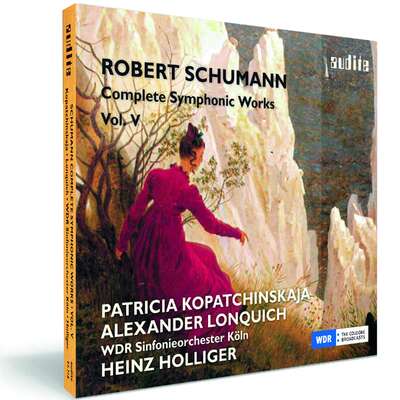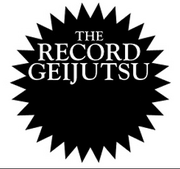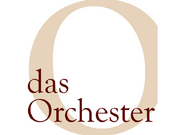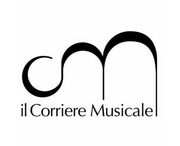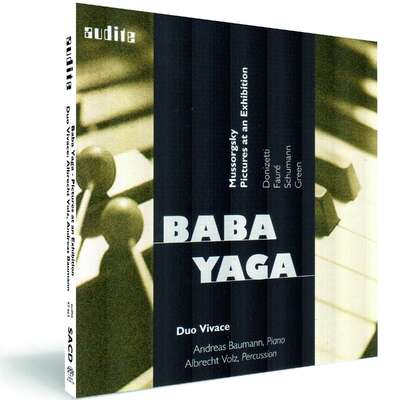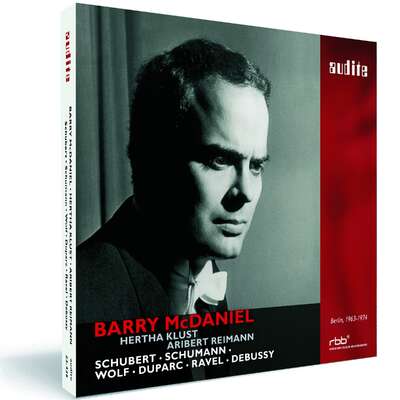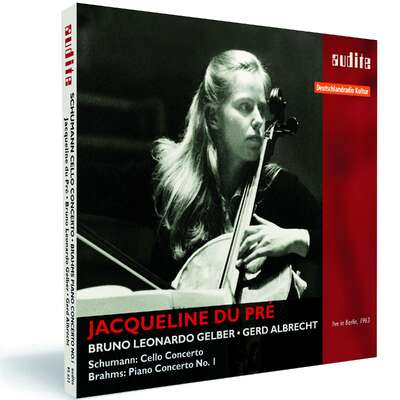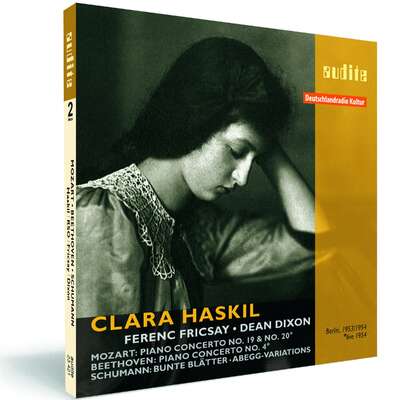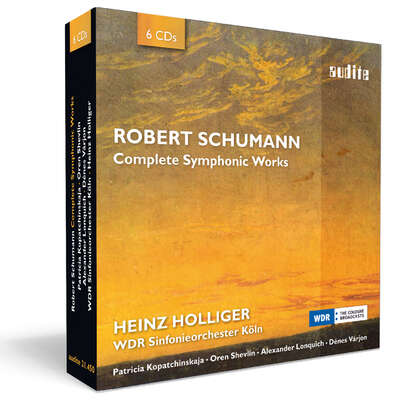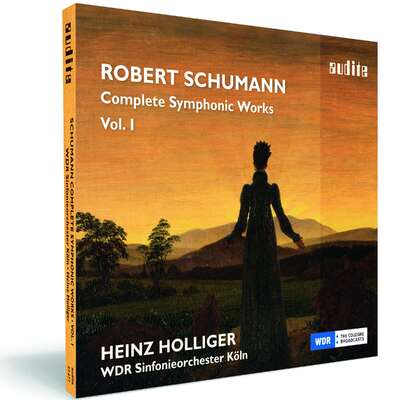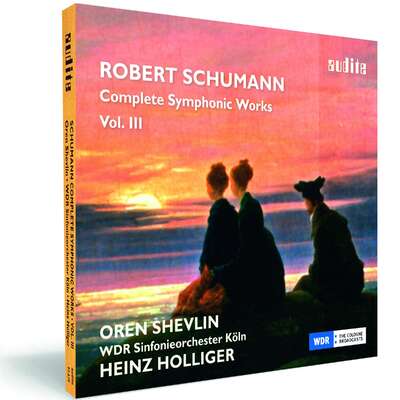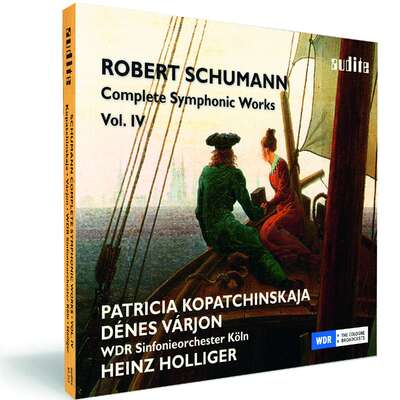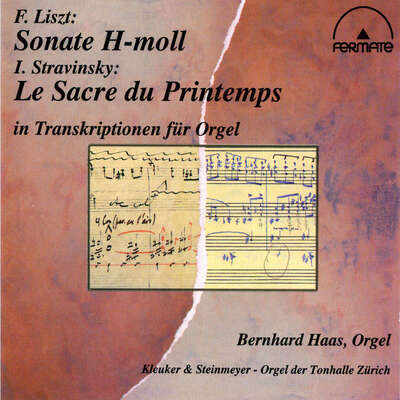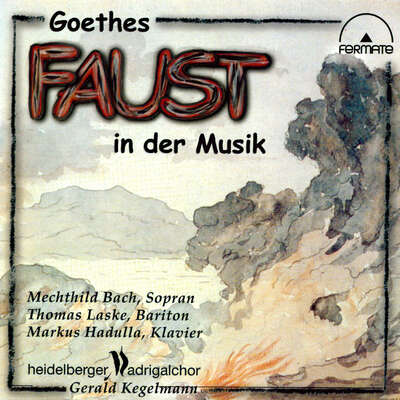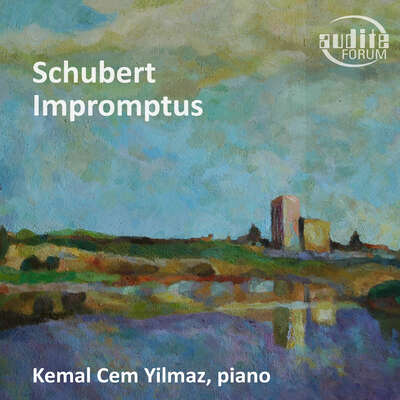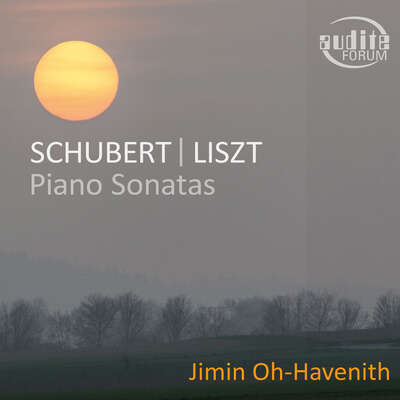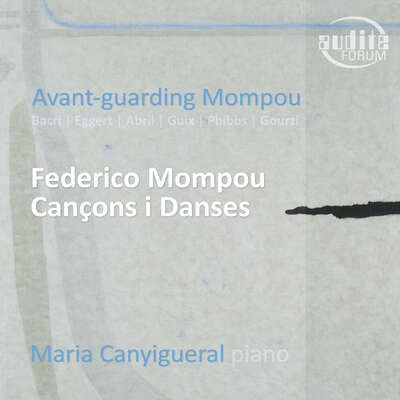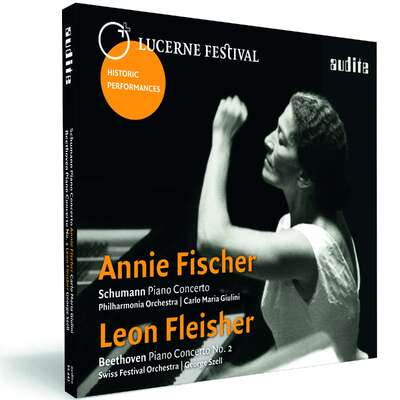
In Schumann’s œuvre for solo instruments and orchestra, the Konzertstücke complement his solo concertos. Confined to one movement, they are more concentrated, more pointed in their characters and freer in the development of their ideas than their bigger siblings. The covertly multi-movement piece for four horns also harnesses the formal and poetic experience of the Fourth Symphony: Schumann was a composer with open borders.more
"Heinz Holliger continues to explore Schumann’s symphonic works in a very clear and analytical way. The highlight of the CDs is the very fresh and vivid performance of the Violin Concerto." (Pizzicato)
Details
| Robert Schumann: Complete Symphonic Works, Vol. V | |
| article number: | 97.718 |
|---|---|
| EAN barcode: | 4022143977182 |
| price group: | BCA |
| release date: | 18. March 2016 |
| total time: | 67 min. |
Bonus Material
Informationen
Schumann's Konzertstücke complement his solo concertos. Confined to one movement, they are more concentrated, more pointed in their characters and freer in the development of their ideas than their bigger siblings.
Patricia Kopatchinskaja puts her own stamp onto this compact genre. Corresponding to her performance of the Violin Concerto (Vol. 4), she also interprets the Violin Fantasy without any Romantic bias. She traces Schumann's contrasts with a broad sound palette, clear sounds alternating with intensive vibrato, and virtuoso passages characterised by nimble agility. The Fantasy finds its expression in Kopatchinskaja's free approach.
Alexander Lonquich's performance of the two Konzertstücke for piano follows an individual, but nonetheless Romantic reading, favouring rich sounds and carefully controlled accentuation as a means of expression.
The covertly multi-movement Konzertstück for Four Horns reveals Schumann's symphonic experience: he softens the boundaries of the symphony as a genre in the Classical-Romantic tradition.
April will see the release of the Schumann edition's final volume, showcasing the "Zwickau" Symphony as well as the complete Overtures.
Reviews
Correspondenz Robert Schumann Gesellschaft | Nr. 39 / Januar 2017 | Gerd Nauhaus | January 1, 2017
Wir erleben ein homogenes Quartett, aus dem sich die halsbrecherisch schwierige 1. Hornpartie bei Bedarf heraushebt, das aber in lyrischen wie dramatischen Partien mühelos seinen Mann steht, so dass eine der mitreißendsten Darbietungen des Konzertstücks entsteht, die der heutige Musikmarkt zu bieten hat.Mehr lesen
Stereo | 1/2017 Januar | Arnt Cobbers | January 1, 2017 Kritiker-Umfrage: Die zehn besten CDs 2016
Arndt Cobbers: 2. Schumann, Sämtliche Sinfonische Werke Vol. 5; Kopatchinskaja, Lonquich, WDR Sinfonieorchester, Holliger (Audite): Das alsMehr lesen
Record Geijutsu | Dec.2016 | December 1, 2016 Spezielle Empfehlung
Japanische Rezension siehe PDF!Mehr lesen
Frankfurter Allgemeine Zeitung | Montag, 19. September 2016 Nr. 219 | Jan Brachmann | September 19, 2016
Redet diese Musik, träumt sie?
Zwei Editionen mit den Konzerten von Robert Schumann wetteifern um die Deutung – auf hohem Niveau
Patricia Kopatchinskaja, die sonst gern alles gegen den Strich zu bürsten sucht, geht das Konzertstück sensibel an, als würde ihre Geige leise weinen in der Höhe zu einem Orchesterlied ohne Worte. Spannungsreich sind ihre Pianissimi, von Akzenten durchzuckt. In einer Illusion des Improvisierten hört man dem allmählichen Verfertigen der Musik beim Spielen zu. Und der große Apparat des Orchesters, die gelegentliche Brillanz der Soli haben dabei nur den Sinn, Palisaden zu ziehen rings um die Gärten dieses Traums.Mehr lesen
Das Orchester | 09/2016 | Thomas Bopp | September 1, 2016
Den Interpreten gelingt so ein bis ins kleinste Detail durchdachter Ansatz, der einen frappierend natürlichen Organismus hervorbringt, wo eines aus dem anderen erwächst.Mehr lesen
Fanfare | August 2016 | Jim Svejda | August 1, 2016
The fourth and fifth volumes of Audite’s Schumann series with Heinz Holliger and the West German Radio Symphony are in many ways the mostMehr lesen
The version of the Piano Concerto is all we’ve come to expect from this excellent series, including alert, rhythmically flexible playing from a first-class radio orchestra (people who play to microphones for a living), a conductor who knows his business in Schumann (a firm grasp of the long line, an ability to clarify the occasionally dense inner voicing, a total lack of fear when it comes to punching the telling accent, an uncanny knack for pointing out the previously overlooked—but deeply important—detail), together with superbly realistic recorded sound that nonetheless bathes everything in an early-Romantic glow. The young Hungarian pianist Dénes Várjon takes a wonderfully fresh and unaffected approach to this familiar music; while everything feels perfectly controlled, he bends the bar line in a way that recalls the great Schumann pianists of the past (Cortot and Rubinstein especially) but nothing feels willful or self-aggrandizing. If the finale lacks the head-long excitement of Fleisher, Janis, Richter, and others, then overall it’s an immensely satisfying outing that makes you want to hear some of the solo piano music from this source. (There’s already an excellent version of the violin sonatas with Carolin Widmann on ECM 1902 and an even finer recording of the cello music with Steven Isserlis on Hyperion 67661.)
Wild child Patricia Kopatchinskaja’s presence guarantees an immensely individual look at the problematic Violin Concerto, and, as usual, she doesn’t disappoint. From her first entrance, it’s a startlingly original interpretation, with a seemingly endless variety of tone color—insured by her endless types of vibrato—down to that chilling moment in the heart of the first movement where the line is so drained of life it sounds like someone keening at a funeral. (There are other moments where the sound is so intense at the lower range of audibility that you wonder if she heard of Leonard Bernstein’s extraordinary instruction to a string section: “Play triple piano, but use the kind of vibrato you use playing triple forte.”) Holliger adds as much point and thrust as he possibly can to the outer movements—especially the opening movement, which for once never seems to drag—and although the slow movement seems less a premature anticlimax than usual, things never quite add up (as they never quite have, at least on records).
Kopatchinskaja is just as committed and persuasive in the violin Fantasie, whose gypsy-like opening flourishes are a reminder that it was written for the Hungarian-born Joseph Joachim, who actually played the piece (he refused to touch the concerto). Like the late Concert Allegro with Introduction which Schumann began writing only three days after the Fantasie was finished, it’s a work whose thematic inspiration is pretty thin gruel, as is the working out of the basic material. Like Kopatchinskaja, pianist Alexander Lonquich does everything he can to invest his part with life and interest, though well before the Concert Allegro begins you realize why—after a certain point—the composer’s widow stopped playing it in public.
All concerned are on far firmer footing in the earlier Introduction and Allegro appassionato, written well before Schumann was beginning to lose his grip on things. Lonquich responds admirably to the work’s impetuosity and high romance, though not with quite the same magical fusion of freshness and knowing finesse Jan Lisiecki achieves in his recent recording with Antonio Pappano (DG 479 5327).
The orchestra’s horn section turns in a spectacular account of the op. 86 Konzertstück, which still gets recorded far more frequently than it’s actually performed, given that its often stratospheric writing for the first horn is an endless series of clams just waiting to happen. Holliger and the soloists’ colleagues give them rousing support, though the closing bars lack the visceral excitement of Gerard Schwarz and the Seattle Symphony’s madcap dash to the end (Naxos 8.572770).
Collectors of this fine series will have snatched up both installments by now; others can proceed with minimal caution, as anything Kopatchinskaja does these days is mandatory listening.
BBC Music Magazine | July 2016 | Erik Levi | July 1, 2016
Patricia Kopatchinskaja is typically bold and provocative in Schumann's Violin Concerto. Largely eschewing the full-blooded sonorities favoured byMehr lesen
Heinz Holliger and the WDR Sinfonieorchester are responsive partners both in the Violin Concerto and its far less problematic counterpart for piano. This latter work is presented in a relatively straightforward manner by Dénes Várjon, who emphasises its playfulness and lightness of touch, especially in the slow movement and Finale.
Holliger is particularly good at bringing out light and shade in Schumann's orchestration and highlighting inner details. This clarity of texture is evident throughout the two Konzertstücke for piano Op. 92 and Op. 134, where Holliger matches Alexander Lonquich's muscular tone with powerfully driven orchestral tuttis. The Konzertstücke for four horns, magnificently executed by the orchestra's principals, also benefits from Holliger's insights, the irresistible exuberance of the outer movements contrasting with the mellifluous expressiveness achieved in the central Romanze. Less convincing is the Fantasie for violin and orchestra, composed in the same year as the Violin Concerto but less exalted. Kopatchinskaja shows considerable charismatic imagination in projecting the rustic features of the faster section, but makes a few slips of intonation.
www.opusklassiek.nl | juni 2016 | Gerard Scheltens | June 1, 2016
Maar het "pièce de résistance" van deze cd is toch het Konzertstück voor vier hoorns, dat door de eigenaardige bezetting niet vaak wordt gespeeld. Maar wat een geweldig stuk ... wat een vrolijkheid... en wat een speelplezier... hier kom je helemaal van bij...Mehr lesen
Crescendo Magazine | Le 22 mai 2016 | Ayrton Desimpelaere | May 22, 2016 Fin d’une très belle intégrale Schumann par Heinz Holliger
La baguette de Heinz Holliger est toujours aussi attrayante, presque envoutante tant le chef parvient à faire sortir de l’orchestre une intensité dramatique et une énergie jamais interrompue.Mehr lesen
Infodad.com | May 12, 2016 | May 12, 2016 When soloists soar
Having long since proved himself a superior oboist, Heinz Holliger is nowMehr lesen
Gramophone | 03.05.2016 | David Threasher | May 3, 2016
Schumann’s Violin Concerto has one of the strangest histories of all great Romantic works. His last piece for orchestral forces, it was inspired byMehr lesen
This coincided with a particularly stressful period in Schumann’s personal and professional life, not least the fallout from his deficiencies as a conductor with the Düsseldorf Musikverein. He was plagued by illness; but work on music for Joachim—two sonatas, the Phantasie, Op 131, and the Concerto—invigorated him and he remarked often on his ability to concentrate diligently on the music for his young new fiddler friend.
Joachim never performed the concerto, though. With Schumann’s decline and suicide attempt, the violinist considered the work to be ‘morbid’ and the product of a failing mind; he wrote that it betrayed ‘a certain exhaustion, which attempts to wring out the last resources of spiritual energy’. This attitude evidently rubbed off on Clara and Brahms, who omitted it from the complete edition of Schumann’s works. Joachim retained the manuscript and bequeathed it to the Prussian State Library in Berlin upon his death in 1907, stating in his will that it should be neither played nor published until 1956, 100 years after Schumann’s death.
It was in 1933, however, that it came to light. This is where the story turns very peculiar. The violinist sisters Jelly d’Arányi and Adila Fachiri held a séance in which the shade of Schumann asked that they recover and perform a lost piece of his; then Joachim’s ghost handily popped up to mention that they might look in the Prussian State Library. A copy of the score was sent to Yehudi Menuhin, who pronounced it the ‘missing link’ in the violin literature between Beethoven and Brahms, and announced he would give its premiere in October 1937. D’Arányi claimed precedence on account of Schumann’s imprimatur (albeit from the other side), and the German State invoked their copyright on the work and demanded a German soloist have the honour. Georg Kulenkampff was eventually entrusted with the world premiere; Menuhin introduced it in the US and d’Arányi in the UK.
It’s long been considered a problematic work, owing partly to Joachim’s opinion of it, partly to some supposedly heavy scoring and partly to the awkward gait of the polonaise finale, which can too easily become a graveyard for dogged soloists. Nevertheless, it’s something of a rite of passage for recording violinists, and two of the finest present it on new discs, as Patricia Kopatchinskaja goes head-to-head with Thomas Zehetmair. Kopatchinskaja (with the Cologne WDR SO under Heinz Holliger in Vol 4 of his series of Schumann’s ‘Complete Symphonic Works’) displays the full range of sounds she is able to draw from her instrument, spinning something almost hallucinatory in the slow movement. The tone employed by Zehetmair (directing the Orchestre de Chambre de Paris) is more focused, more centred, as would appear to be his outlook on the work: all three movements are 40 seconds to a minute faster than Kopatchinskaja. Nevertheless, her concentration and imagination sustain the performance, and Holliger and his players follow her lead in creating some wondrous sounds, demonstrating yet again that Schumann’s orchestration isn’t as leaden as it’s often made out to be.
On first hearing, I wasn’t sure if I’d wish to revisit Kopatchinskaja’s disc in a hurry. But there’s something magnetic about her vision of the work, about the abandon with which she plays, never shunning an ugly tone when it’s called for. Zehetmair’s tidier, more dapper performance avoids such ugliness and makes choosing between the two an invidious choice. Holliger couples an energetic performance of the Piano Concerto with Dénes Várjon, incorporating in the first movement some features of the earlier Phantasie on which it was based, and which some might prefer to the self-conciously individual recent readings by Ingrid Fliter (reviewed on page 40) or Stephen Hough (Hyperion, 4/16). Zehetmair offers a lithe, spontaneous Spring Symphony and the fiddle Phantasie that Joachim did play.
Pat Kop also offers this latter work, on Vol 5 of Holliger’s series. Again, she takes a more spacious, more reactive approach than Zehetmair; elsewhere on the disc, Alexander Lonquich is similarly more inclined to let the music breathe in Schumann’s two single-movement concertante piano works than, say, the tauter Jan Lisiecki (DG, 1/16). The real draw here, though, is the Konzertstück for four horns and orchestra, in a performance that makes a truly joyful noise, even if it’s perhaps less sleek than Barenboim in Chicago or less steampunk than John Eliot Gardiner with a quartet of period piston horns.
These days, you’re as likely to find—on disc, at least—the Cello Concerto co-opted by violinists. Jean-Guihen Queyras returns it to the bass clef, though, completing the series of the three concertos and piano trios with Isabelle Faust, Alexander Melnikov and the Freiburg Baroque Orchestra under Pablo Heras-Casado. Queyras gives the best possible case for the concerto, making a virtue of the relative short-windedness of period instruments but exploiting their greater ensemble clarity. Where the gut strings really tell, though, is in the First Piano Trio—especially at those points at which Schumann asks for new sounds, such as in the first-movement development, where he tells the string players to play at the bridge for an eerie, glassy sound. I’ve enjoyed all the discs in this series without necessarily preferring them to certain older (modern-instrument) favourites. The combination of Queyras’s concerto and the wonderful, driven D minor Trio, though, leads me to suspect that this is the most persuasive of the three.
Thüringen Kulturspiegel | Mai 2016 | Dr. Eberhard Kneipel | May 1, 2016
AIte Schönheit - neuer Glanz
Die Gesamtaufnahme von Robert Schumanns Orchesterwerken beim Edel-Label audite
Erster Anlauf, erstaunliche Experimente, imponierende Meisterwerke: Ein außergewöhnliches und an Entdeckungen reiches Hör-Erlebnis ist zu haben – auch dank audite!Mehr lesen
ClicMag | N° 38 Mai 2016 | Pascal Edeline | May 1, 2016
Une fois de plus, Holliger concilie l'aspect réfléchi, apollinien, de la lisibilité des lignes et l'aspect dionysiaque de la ferveur, de l'effusion lyrique émanant comme une voix unanime des solistes et de l'orchestre, mais sa direction solaire magnifiant le contraste et la clarté pourrait laisser de marbre les nostalgiques des timbres fondus, des legato sinueux, des élans remontant des profondeurs obscures, des tensions intériorisées, des paysages nimbés de mystère. Mehr lesen
Der neue Merker | 26. April 2016 | Dr. Ingobert Waltenberger | April 26, 2016
Alexander Lonquich am Flügel bringt genau jenen melancholisch-jubelnden Ton, jenes fantastische Fabulieren voller zarter Farben ein, „polarisierend zwischen Trotz und Melancholie auf der einen, Traum und Sehnsucht auf der anderen Seite.“ Heinz Holliger als Seele des Unterfangens ist ein idealer Dirigent und Begleiter, der sich dem Schumann‘schen Kosmos beeindruckend anverwandt hat.Mehr lesen
Fono Forum | April 2016 | Michael Kube | April 1, 2016
Nach fast anderthalb Jahren setzt das Label audite seinen Schumann-Zyklus mit einer Doppelfolge fort. Aufgrund der Besetzung und der Werke fraglos einMehr lesen
Wie so oft erweist sich alles nur als eine Frage der Interpretation – von der Verständigkeit gegenüber dem Notentext über das aufmerksame Zusammenwirken bis hin zur passgenauen Artikulation und das rechte Tempo. In diesem Sinne gelingt es Holliger und seinen Solisten mit den Konzertstücken für Klavier op. 92 und op. 134 (Alexander Lonquich) sowie der Violin-Fantasie op. 131 tatsächlich zu überzeugen: Man hört einen Komponisten, dem das virtuose Element eigentümlich fremd und doch so nah war, dem am Ende aber der poetische Gedanke mehr zählte als jede leere Phrase. Hier begegnen sich über mehr als 150 Jahre hinweg die Komponisten Schumann und Holliger auf ästhetischer Ebene – der Dirigent Holliger aber weiß, wie auch der rechte Tonfall in einer klanglich agilen, in nahezu jedem Moment die Aufmerksamkeit bannenden Aufnahme festzuhalten ist. Umso mehr muss der stark aufgeraute, bisweilen kantige Zugriff von Patricia Kopatchinskaja im Violinkonzert verstören, der nicht gerade vor wohliger Wärme sprüht; das kühle Solo des langsamen Satzes lehrt einen gar das Frösteln. Daneben vermag Dénes Várjon im delikat angegangenen Klavierkonzert mit seinem eher vorsichtigen, keineswegs griffigen Forte nicht vollständig zu überzeugen.
Musica | N° 275 - aprile 2016 | Giuseppe Rossi | April 1, 2016
Un rinnovato interesse per le opere orchestrali di Robert Schumann ha vistoMehr lesen
Record Geijutsu | APR. 2016 | April 1, 2016
Japanische Rezension siehe PDF!Mehr lesen
Stuttgarter Zeitung | 22.03.2016 | Dr. Uwe Schweikert | March 22, 2016
Eine Großtat für Robert Schumann
Heinz Holliger und das WDR Sinfonieorchester Köln nehmen das gesamte sinfonische Werk auf
Man sagt wohl nicht zu viel, wenn man diese CDs als die wichtigste Schumann-Einspielung seit langem rühmt. Sie beweist, dass es keines historischen Instrumentariums und auch keines Spezialistenensembles bedarf, um die Werke aus dem Geist der Zeit für heute aufs Neue zu verlebendigen.Mehr lesen
The Guardian | Thursday 17 March 2016 | Andrew Clements | March 17, 2016
Schumann: Konzertstücke; Fantasies
CD review – questing and luxuriant
The work for four horns stands out, if only for the novelty of its scoring, and Holliger’s performance – with a fabulously secure quartet of soloists – luxuriates in the sonorities it generates, while in the two works with piano, the soloist Alexander Lonquich finds moments of poetic beauty in the lyrical interludes. Mehr lesen
Musik & Theater | 03/04 März/April 2016 | Reinmar Wagner | March 1, 2016 Feuerwerk an Ideen
[...] wenn Patricia Kopatchinskaja mit dabei ist, dann erhält die Bezeichnung Fantasie erst ihre wahre Bedeutung: Ein Feuerwerk an Ideen – manche spektakulär, manche nur Nuancen – lebendig, rhythmisch aufsässig präsentiert oder in lässiger Nonchalance gibt dieser Musik improvisatorischen Charakter.Mehr lesen
Vorarlberger Nachrichten | 19. Februar 2016 | Fritz Jurmann | February 19, 2016 MusikTipps von Fritz Jurmann
[...] auch hier setzt [Kopatchinskaja] in [Schumanns] späten, oft verkannten Violinkonzert d-Moll mit vibratoarmem Spiel und leeren Saiten deutliche Akzente. Experimentelle Züge dienen der Künstlerin als Leitbild für ihre stark individuelle Lesart jenseits aller klischeehaft romantisierten Hörgewohnheiten. Desgleichen verfährt sie mit seiner Fantasie für Violine, die ihrer ungezügelten Spielweise besonders entgegenkommt.Mehr lesen
Rondo | Nr. 936 // 16. - 22.04.2016 | Guido Fischer | February 19, 2016
Ins hymnische Land der Schwärmerei lädt [...] das Konzertstück für vier Hörner ein – dank der vier Bravour-Hornisten des WDR Sinfonieorchesters Köln.Mehr lesen
www.ilcorrieremusicale.it | 18 febbraio 2016 | Stefano Cascioli | February 18, 2016
Senza dubbio è un Cd piuttosto singolare, che, vista la proposta di brani ben poco conosciuti, ha i tratti delle incisioni “di riempimento” (necessarie in ogni integrale che si rispetti), ma non per questo è una proposta meno interessante, anzi gli accostamenti sono davvero suggestivi, e chiariscono ancor meglio alcune peculiarità del complesso pensiero schumanniano.Mehr lesen
www.pizzicato.lu | 11/02/2016 | Alain Steffen | February 11, 2016 Holligers moderner Schumann
Ich habe mit Heinz Holliger als Dirigent nicht selten meine Schwierigkeiten. Gerade im romantischen Repertoire ist er mir oft zu kühl und zuMehr lesen
Wie schon Isabelle Faust räumt auch Kopatchinskaya mit den Klischees auf und zeigt uns Schumanns Musik in einem sehr frischen und dynamischen Gewand. Holliger dirigiert erstaunlich musikantisch, verzichtet aber wie gewohnt auf zu starke romantische Exkurse. So stehen vor allem ein aktzentreiches und klares Musizieren im Vordergrund.
Mit dem gleichen Konzept geht Holliger auch das beliebte Klavierkonzert an. Genussvoll lässt er das hervorragend disponierte WDR Sinfonieorchester Köln aufspielen, sieht aber seinen Schumann auch hier durch eine strengere klassischere Brille. Was der Musik aber sehr gut tut. Dénes Varjon spielt das Konzert sehr virtuos und mit einer sehr deutlichen Artikulation. Ob man jetzt dieses eher unromantische Interpretationskonzept mag oder lieber die Werke in der klassischen Optik sieht sei einem jeden überlassen. Für mich jedenfalls kommt das Violinkonzert in der Interpretation Kopatchinskaya/Holliger sehr nahe an das Referenzniveau heran.
Vol V. präsentiert etwas weniger attraktive Werke. Hier sticht insbesondere das Konzertstück für vier Hörner ins Auge. Holliger und seine Solisten wollen von Jägerromantik nichts wissen und spielen das Stück äußerst präzise und klar. Der Wohlklang der Hörner ist zwar präsent, ist aber mehr das Resultat einer analytischen und architektonisch begründeten Interpretation als das einer rein atmosphärisch orientierten. Alexander Lonquich spielt die beiden Konzertstücke für Klavier und Orchester op. 92 & 114 mit schönem Ton und ausgewogenem Ausdruck, Kopatchinskaya ist in der Fantasie für Violine und Orchester wieder einmal überragend. Heinz Holliger kann diesen drei Werken deutlich weniger interessante Aspekte abgewinnen als dem Violinkonzert oder dem Klavierkonzert.
Heinz Holliger continues to explore Schumann’s symphonic works in a very clear and analytical way. The highlight of the CDs is the very fresh and vivid performance of the Violin Concerto.

